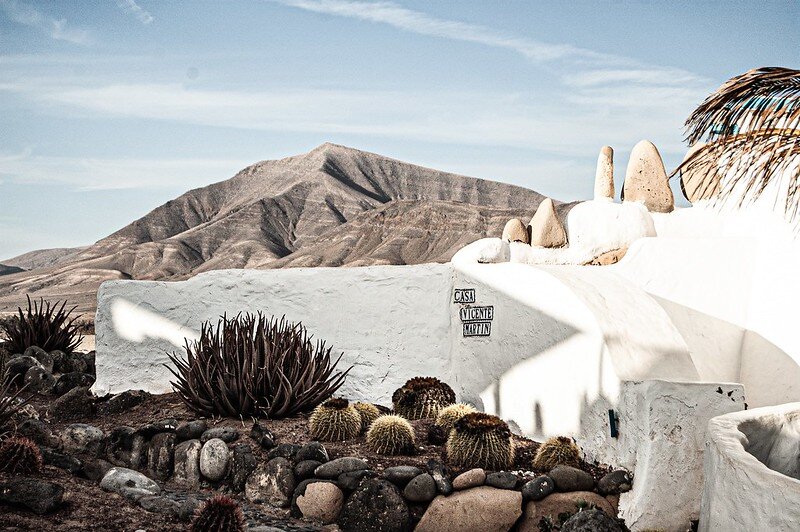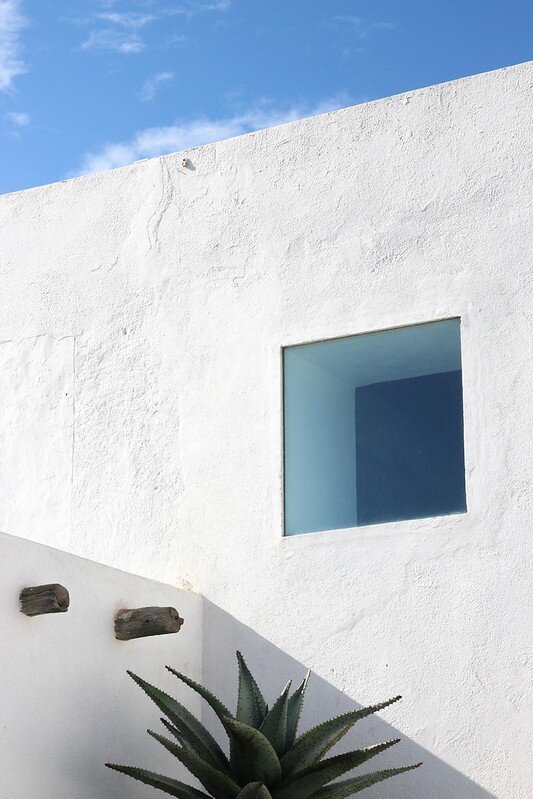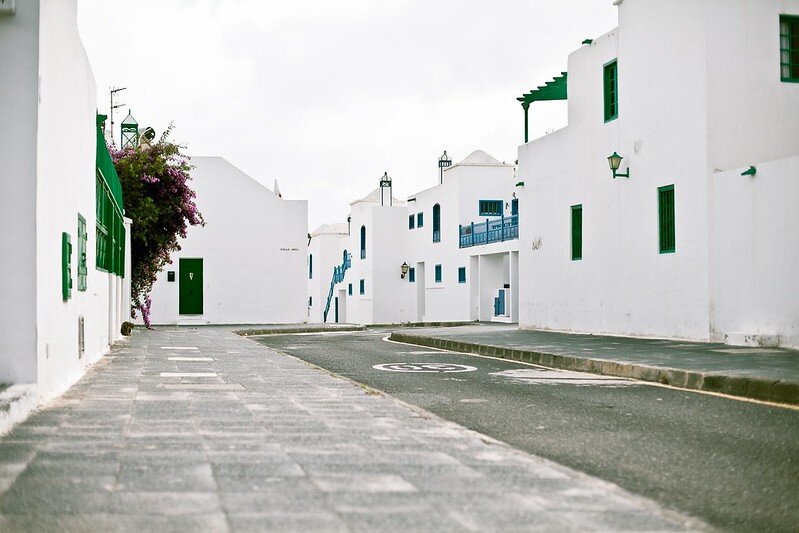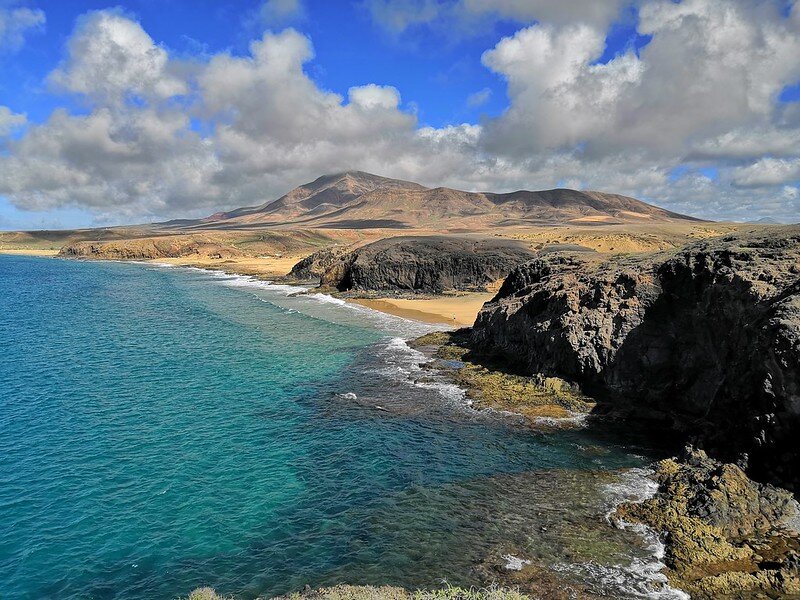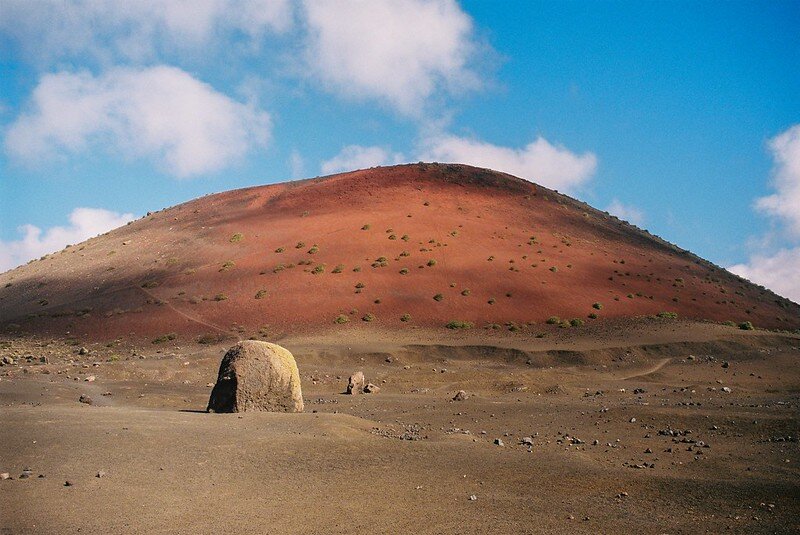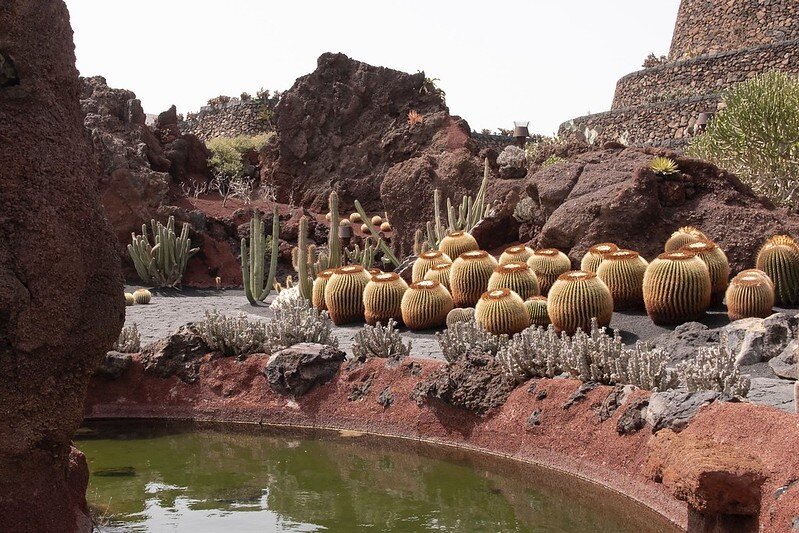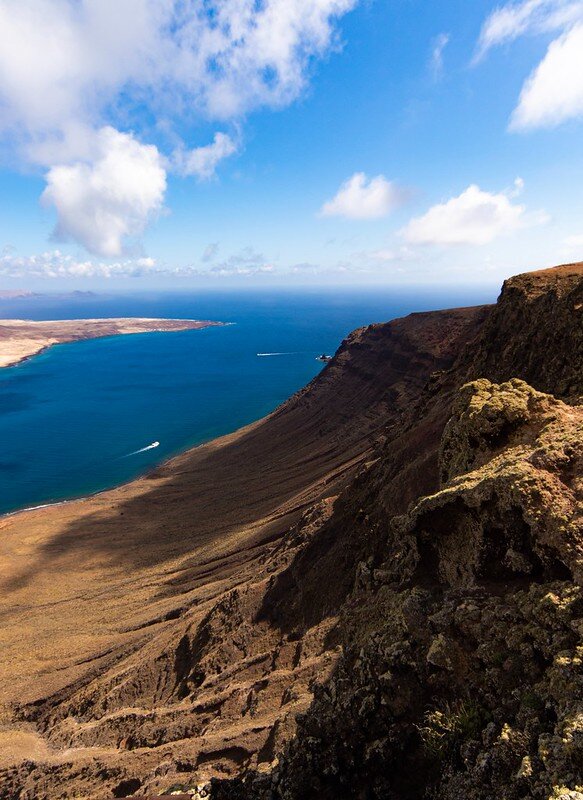Lanzarote
I love Lanzarote, a sun-blasted island formed by volcanoes. The first inhabitants, most probably Guanches, were of North African origin. Many of them were killed, enslaved, or conquered by the Spaniards in the 13th century.
In 1730, Lanzarote began to tremble, and the first in a series of eruptions started for six years. Rivers of lava poured all over. The night sky glowed in colors of blue and red. The island is the easternmost of the Canary Islands, a self-governing territory of Spain.
Its volcanoes have been asleep for two centuries, but you can see the geology that eruptions left behind. The contrast between black soil and white buildings is fascinating. With all the holes over the landscape, it looks like a vast carpet of green and black. The holes are an innovative technique unique to Lanzarote. Specific grapevines are planted in the volcanic soil, typically six feet deep and over a dozen feet wide. Its curved stone walls surround each to keep in the condensation from dew and rainfall.
The leading industry has been tourism, but visitors stopped frequenting the restaurants and hotels during the pandemic. The pace of life slowed, and locals spent the year drinking their wines, eating their food, and appreciating their landscape. "This is my castle." gets a different meaning.
